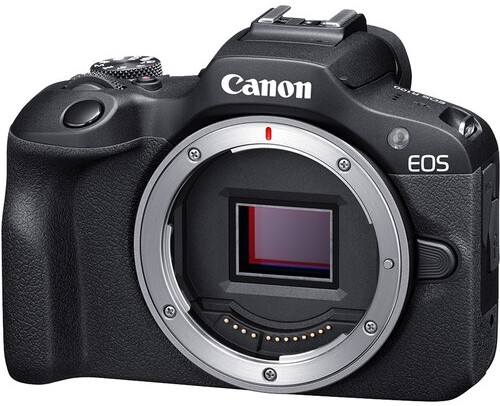The mirrorless camera market has become increasingly crowded with options for beginners, but Canon’s entry-level offering continues to turn heads. If you’re considering making the jump from smartphone photography or upgrading from an older DSLR, you’ve likely encountered the Canon R100 in your research. This compact camera promises professional-level features at a price point that won’t require a second mortgage, but does it actually deliver on that promise?
Folks who have spent considerable time shooting with the Canon R100 in various conditions, from dimly lit coffee shops to bright outdoor landscapes, have discovered that it’ a camera that understands its audience surprisingly well. Canon didn’t try to cram every feature from their professional lineup into this body. Instead, they focused on what matters most to someone buying their first serious camera.
In this comprehensive review, we’ll explore everything from image quality and autofocus performance to real-world usability and long-term value. Whether you’re a content creator looking for an affordable video solution or a photography enthusiast ready to explore manual controls, this review will help you determine if the Canon R100 deserves a spot in your camera bag.
Table of Contents
Design and Build Quality
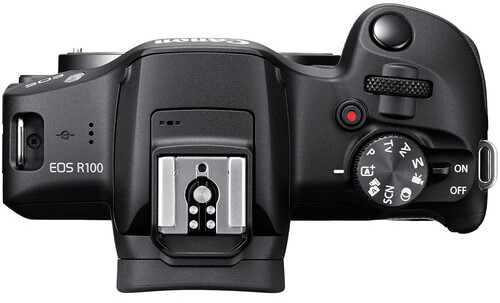
The Canon R100 feels reassuringly solid despite its lightweight construction. Weighing about 13 ounces with the battery and card, it’s light enough for all-day shooting without fatigue. The textured grip provides adequate purchase, though photographers with larger hands might find it a bit cramped during extended sessions.
Canon made some interesting choices with the button layout. The mode dial sits prominently on the top plate, providing quick access to shooting modes. However, the lack of a front control dial means you’ll be reaching for the touchscreen more often than you might with pricier models. This isn’t necessarily a drawback for beginners who are still learning the relationship between aperture, shutter speed, and ISO.
The 3-inch 1.04-million-dot LCD screen is fixed rather than articulating, which limits its usefulness for vlogging or high-angle shots. It’s a clear cost-cutting measure, but the screen quality itself is quite good with adequate brightness for outdoor viewing. The electronic viewfinder, while small, provides a clear view and refreshes smoothly enough for tracking moving subjects.
Build materials skew toward plastic, but everything feels well-assembled. This isn’t a camera you’d want to use in heavy rain without protection, but it should handle normal wear and tear without issue. The single SD card slot is located on the side rather than the bottom, making card swaps easier when using a tripod.
Image Quality and Sensor Performance
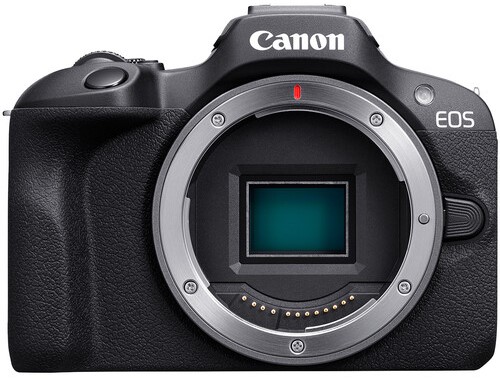
The 24.1-megapixel APS-C sensor delivers excellent image quality that will satisfy most photographers upgrading from smartphones or compact cameras. Colors are vibrant without being oversaturated, and Canon’s color science continues to impress with natural-looking skin tones straight out of camera. Dynamic range is respectable for this class, allowing for recovery of shadow detail and highlight information in post-processing.
Low-light performance exceeds expectations for an entry-level camera. Images remain clean and usable up to ISO 3200, with acceptable noise levels extending to ISO 6400 for smaller prints or web use (its ISO range is 100-12800). Beyond that, you’ll notice a significant degradation in image quality, but honestly, most photographers at this level won’t be pushing the camera into extreme ISO territory regularly.
Shooting RAW files provides substantial flexibility in post-processing. The files contain plenty of information for recovering blown highlights or lifting shadows, though you won’t get the same latitude as you would with a full-frame sensor. JPEG output is excellent for those who prefer to shoot and share without extensive editing, with Canon’s processing doing a commendable job of balancing sharpness and noise reduction.
One area where the sensor truly shines is with good light. Outdoor photography in daylight produces crisp, detailed images with punchy colors. Landscape photographers will appreciate the detail resolution, and portrait shooters will love how the camera handles skin tones. The lack of in-body image stabilization means you’ll need to be more mindful of shutter speeds, but many RF lenses include optical stabilization to compensate.
Canon R100 Autofocus and Performance
As Tech Through The Lens discusses in the video above, the Dual Pixel CMOS AF II system is where the Canon R100 punches well above its weight class. This is essentially the same autofocus technology found in much more expensive Canon cameras, and it performs brilliantly. Face and eye detection work reliably in good light, locking onto subjects quickly and maintaining focus even as they move through the frame.
Continuous shooting reaches 6.5 frames per second with continuous autofocus, which is adequate for most casual action photography. The buffer depth is modest, and its performance varies and should be tested based on your shooting needs. This won’t satisfy sports photographers, but for everyday shooting and occasional action, it’s perfectly serviceable.
Low-light autofocus performance is good down to about -2 EV, meaning the camera can focus in conditions that are quite dim to the human eye. There’s occasionally some hunting in very dark scenes, but overall, the autofocus system is one of the camera’s strongest features. It inspires confidence and rarely leaves you guessing whether you nailed focus.
Video Capabilities
As Tony & Chelsea Northrup discuss above, video shooters will find the Canon R100 capable but limited in certain ways. The camera records 4K video at up to 24 frames per second, with a significant 1.6x crop applied. This crop factor can make it challenging to achieve wide-angle shots without investing in ultra-wide lenses. For general video work, though, the quality is quite good with minimal rolling shutter and smooth autofocus transitions.
Full HD recording is available at up to 60 frames per second, which provides more flexibility for creating slow-motion footage or simply smoother motion. The lack of crop in 1080p mode makes this the more practical option for many users, especially those shooting run-and-gun style content. The autofocus system works beautifully in video mode, tracking faces smoothly without the jarring focus transitions that plague some competing cameras.
Audio options are limited to the built-in microphone, as there’s no external microphone input. This is a significant limitation for serious video work, though the built-in mic does a reasonable job in quiet environments. There’s also no headphone jack for monitoring audio, which means you’ll need to review footage afterward to check sound quality.
For casual content creators and vloggers who don’t need professional audio, the Canon R100 can certainly produce quality video. The fixed screen is a hindrance for self-recording, though you can work around this by using the Canon Camera Connect app on your smartphone as a remote monitor. It’s not ideal, but it’s functional for occasional vlogging needs.
Lens Compatibility and the RF Ecosystem
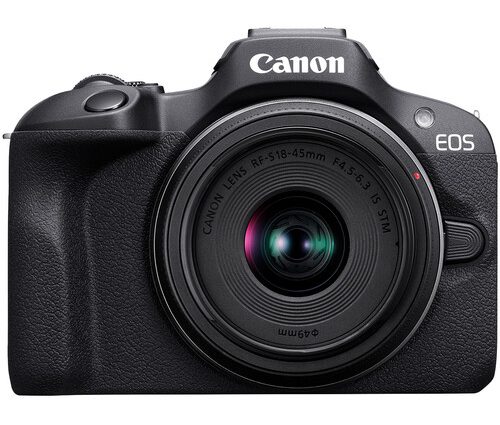
One of the most compelling aspects of choosing the Canon R100 is access to the RF lens lineup. Canon’s RF mount offers excellent optical performance and relatively compact lens designs. The RF-S lenses, designed specifically for APS-C sensors, provide affordable options that match well with the camera’s capabilities.
The RF-S 18-45mm kit lens that typically bundles with the camera is surprisingly capable. It’s compact, offers a useful focal range for everyday photography, and produces sharp images across the zoom range. For photographers looking to expand beyond the kit lens, the RF-S 55-210mm provides telephoto reach at a reasonable price point.
More experienced photographers will appreciate that the camera works with the full range of RF lenses designed for Canon’s full-frame bodies. These lenses are generally more expensive but offer professional-grade optical quality. Using full-frame lenses on the APS-C sensor provides a 1.6x effective focal length multiplier, turning a 50mm lens into an 80mm equivalent.
Canon’s extensive catalog of EF and EF-S lenses from the DSLR era can also be adapted to the RF mount using official Canon adapters. This opens up a vast used lens market and provides excellent value for photographers building a system. The adapters work flawlessly, maintaining full autofocus and image stabilization functionality with compatible lenses.
Battery Life and Connectivity
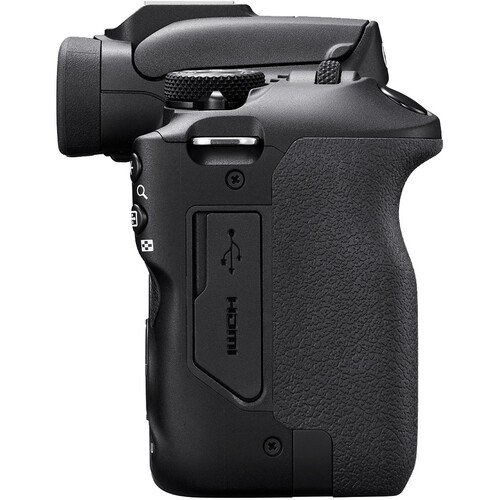
Battery performance is adequate but not exceptional. Canon rates the LP-E17 battery for approximately 340 shots per charge using the viewfinder, or 430 shots using the LCD. In real-world use, though, expect to get far above these figures, depending on your shooting style. Note as well that the battery drains more quickly when using continuous autofocus or reviewing images frequently.
The inclusion of USB-C charging is a modern convenience that simplifies travel. You can charge the battery in-camera using a standard USB-C cable and power adapter, eliminating the need to pack a separate charger. This also means you can top up the battery using a power bank while on the go, which is invaluable for long shooting days.
Wireless connectivity includes both Wi-Fi and Bluetooth, allowing for seamless image transfer to smartphones and tablets. The Canon Camera Connect app works reliably for transferring images and even enables remote shooting with live view on your phone. The connection process is straightforward after the initial setup, and image transfers happen reasonably quickly.
Canon R100 Value and Pricing

At its retail price point, the Canon R100 represents solid value in the entry-level mirrorless market. It’s typically priced lower than comparable offerings from Sony and Fujifilm while delivering competitive image quality and superior autofocus. The camera frequently appears in kit bundles with the 18-45mm lens, which provides everything needed to start shooting immediately.
When comparing the Canon R100 to competitors like the Sony a6100 or Nikon Z30, each camera has distinct advantages. The R100 offers better autofocus performance than most cameras at this price, though it lacks the articulating screen found on some competing models. For photographers prioritizing image quality and autofocus over advanced video features, the pricing makes sense.

Buying used from reputable platforms like MPB presents an excellent opportunity to maximize value, though. MPB offers a detailed grading systems that clearly communicates the condition of used equipment, so you know precisely what you’re getting. Likewise, you benefit from six-month warranties on most items that provide peace of mind.
In fact, a lightly used Canon R100 from MPB might save you 20-30 percent compared to retail pricing, with minimal cosmetic wear and full functionality. The inspected and graded inventory means you’re not taking the same risk as buying from unknown sellers on general marketplaces.
The long-term value proposition is strong thanks to Canon’s commitment to the RF mount. As your skills develop, you can add better lenses while keeping the same camera body. Eventually, you might upgrade to a more advanced RF-mount body like the R7 or R6, but your lens investment carries forward. This upgrade path within the Canon ecosystem protects your initial investment better than switching between brands.
Who Should Consider the Canon R100?
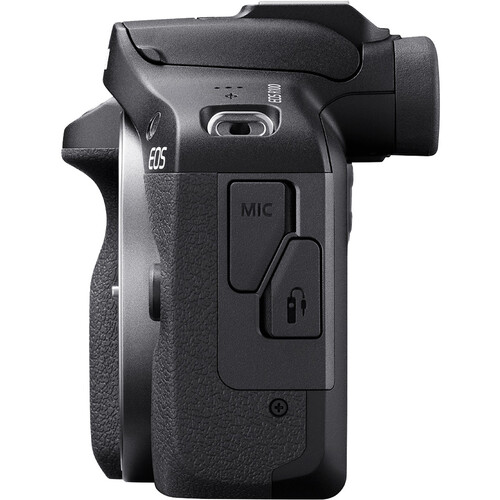
The Canon R100 is ideally suited for photographers making their first serious camera purchase. If you’ve been shooting with a smartphone and find yourself frustrated by its limitations in low light or when trying to capture distant subjects, this camera addresses those pain points effectively. The learning curve is manageable, with automatic modes providing excellent results while you develop your technical skills.
Content creators on a budget will find the camera capable for basic video work, though serious videographers should look at the R50 or R10 for better video specifications. The combination of good image quality, reliable autofocus, and compact size makes it practical for YouTube content, social media posts, and casual vlogging. Just be aware of the audio limitations and fixed screen.
Parents documenting family life will appreciate the responsive autofocus and face detection features. The camera makes it easy to capture sharp images of moving children, and the eye detection ensures focus lands exactly where it should. The lightweight design means you’re more likely to bring it along to events rather than leaving it at home because it’s too bulky.
However, if you’re an experienced photographer looking for a backup body or a compact travel camera, you might find the feature set limiting. The lack of weather sealing, limited controls, and modest burst shooting make it less appealing for demanding use. Similarly, if video is your primary focus, cameras like the R50 offer better specifications for only slightly more money.
Final Verdict
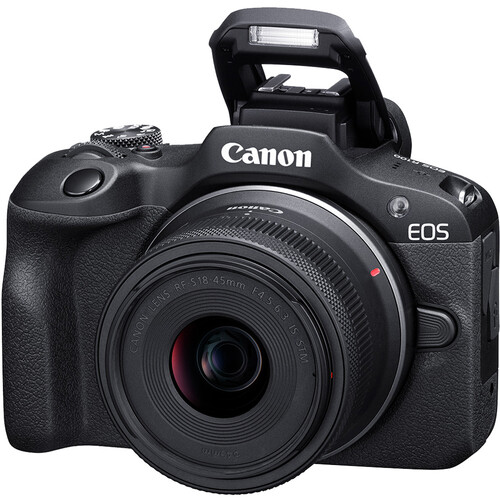
The Canon R100 succeeds by understanding its audience and delivering exactly what entry-level photographers need. It’s not trying to be everything to everyone, and that focused approach results in a camera that excels at its intended purpose. The combination of excellent image quality, impressive autofocus, and access to Canon’s growing RF lens ecosystem creates a compelling package.
Yes, there are compromises. The fixed screen, limited video features, and plastic construction won’t appeal to everyone. But these concessions keep the price accessible while ensuring the core photography experience remains excellent. For most beginners, the missing features won’t be missed, and the money saved can go toward better lenses, which will have a more significant impact on image quality.
If you’re ready to move beyond smartphone photography and explore the creative possibilities of interchangeable lens cameras, the Canon R100 removes the barriers to entry. It’s approachable enough for complete beginners yet capable enough to grow with you as your skills develop. That balance is harder to achieve than it might seem, and Canon has executed it well.
For anyone considering their first serious camera purchase, the Canon R100 deserves a spot on your shortlist. It represents an intelligent entry point into Canon’s mirrorless system, offering decent image quality without the professional-level price tag. Whether you’re capturing family memories, exploring photography as a hobby, or building a foundation for content creation, this camera provides the tools to turn your vision into reality.
Frequently Asked Questions
Is the Canon R100 good for beginners?
Yes, the Canon R100 is excellent for beginners. Its automatic modes produce great results while allowing you to learn manual controls at your own pace. The responsive autofocus system helps ensure sharp images even while you’re developing your technical skills, and the interface is intuitive enough that you won’t spend hours buried in menus.
Does the Canon R100 have image stabilization?
No, the Canon R100 does not have in-body image stabilization. However, many RF and RF-S lenses include optical image stabilization that works effectively to reduce camera shake. For handheld shooting in low light, you’ll want to choose lenses with IS in their name or be mindful of using appropriate shutter speeds.
Can the Canon R100 shoot in RAW format?
Yes, the camera shoots in Canon’s CR3 RAW format, which provides maximum flexibility for post-processing. You can also shoot RAW+JPEG simultaneously if you want the convenience of ready-to-share JPEGs while maintaining RAW files for more serious editing work.
Can I use my old Canon EF lenses on the Canon R100?
Yes, you can use EF and EF-S lenses with an official Canon RF-to-EF adapter. The adapter maintains full autofocus and image stabilization functionality, making it a seamless experience. This compatibility opens up Canon’s extensive catalog of DSLR lenses, including many affordable used options.
Friendly disclaimer: Our articles may contain affiliate links that support us without costing you more, and sometimes we spice things up with sponsored content—but only for products we truly stand behind!

